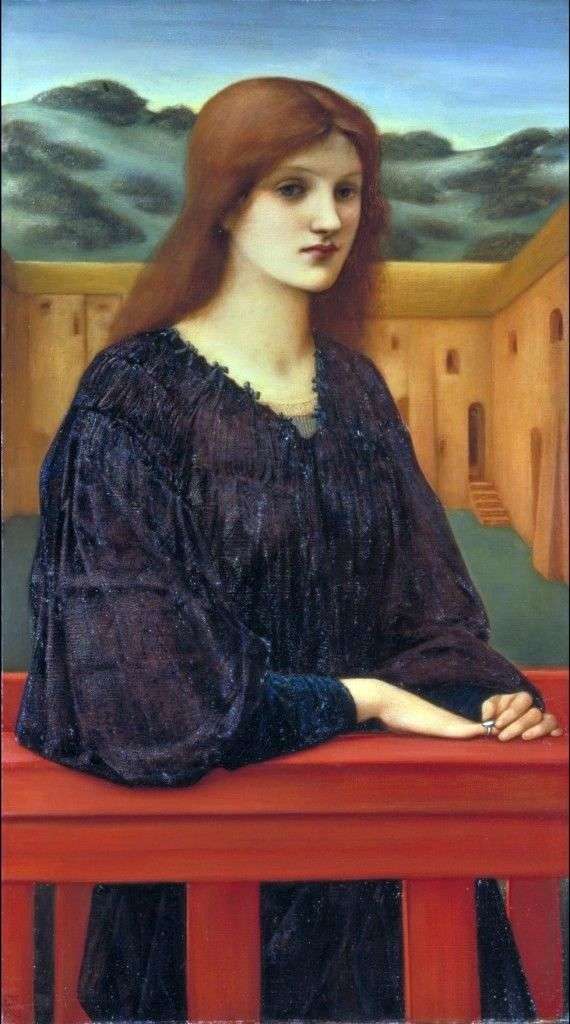
The reputation of Bern-Jones has already reached its peak when he began work on the “Silent Evening.” His paintings on the plot of “Sleeping Beauty” made a sensation when they were exhibited in the gallery of Agnew; whole crowds flocked to the exhibition to look at the huge canvases for which the artist received a colossal sum of fifteen thousand pounds. Although Bern-Jones finally achieved financial independence, he continued to work hard and achieved new successes.
For the portrait, Elizabeth Keane posed; The name of the painting in Latin means “Quiet Evening”. Bessie was one of the favorite models of Bern-Jones. Graeme Robertson noticed that she often got the role of “main” angel or nymph on the artist’s late canvases.
The expression of the heroine’s face, dressed in a dark blue dress, is mysterious, like the landscape in the background; Bern-Jones, perhaps, sent the viewer to the equally ambiguous picture of Leonardo da Vinci – “Mona Lisa”. Bern-Jones imitates the traditions of Italian painting of the Renaissance – the heroine, written in a three-quarter turn, rests on the balustrade.
“Quiet Evening” was exhibited in the New Gallery in 1894, and critic Frederick Stevens suggested that the building in the background is an “empty monastic courtyard”. The fact that a woman twists a ring on her finger may indicate that she is going to become a nun.
Beddington, who bequeathed the picture to the Tate Gallery, recalling the creation of the “Evening Rest”, said that he first drew a figure with umbrella, then painted his face with white paint and umbra, slightly touched his red lips, nostrils and eyes and applied all bright tones, including blue the color of the dress. As a solvent, he used a mixture of lavender oil and turpentine and worked with a flat brush to keep the base smooth.
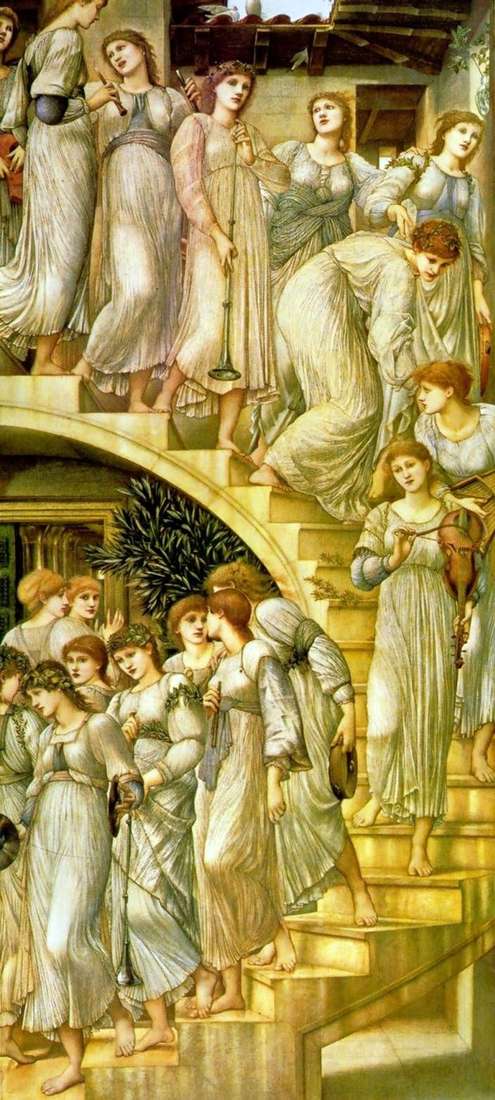 The Golden Staircase by Edward Burne-Jones
The Golden Staircase by Edward Burne-Jones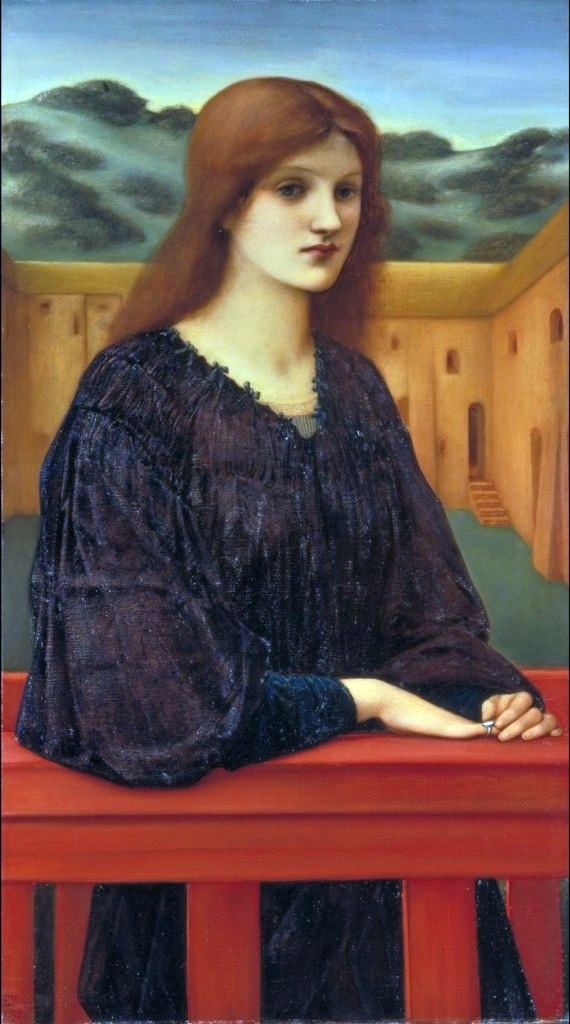 Soirée tranquille – Edward Burne-Jones
Soirée tranquille – Edward Burne-Jones King Kofetua and beggar girl by Edward Burne-Jones
King Kofetua and beggar girl by Edward Burne-Jones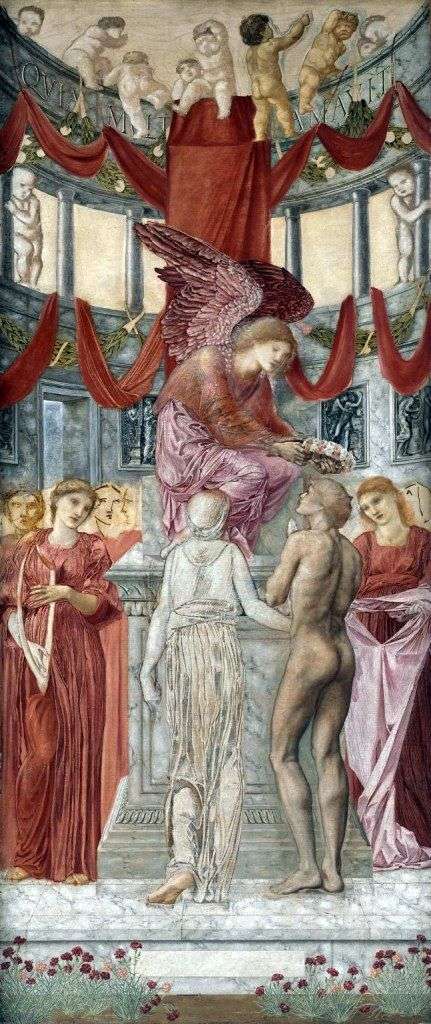 The Temple of Love by Edward Burne-Jones
The Temple of Love by Edward Burne-Jones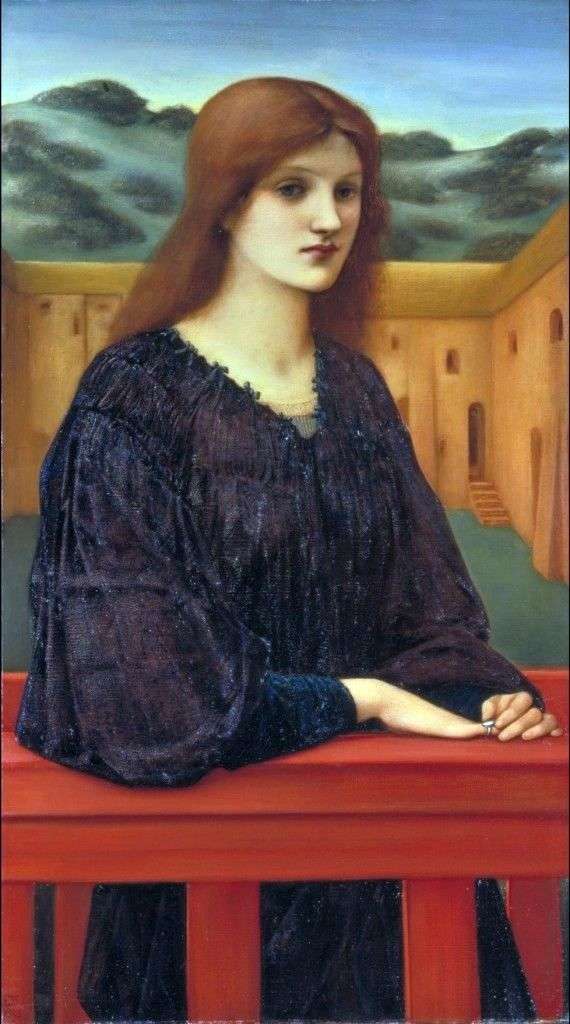 Tarde silenciosa – Edward Burne-Jones
Tarde silenciosa – Edward Burne-Jones Sleeping Chaucer by Edward Burne-Jones
Sleeping Chaucer by Edward Burne-Jones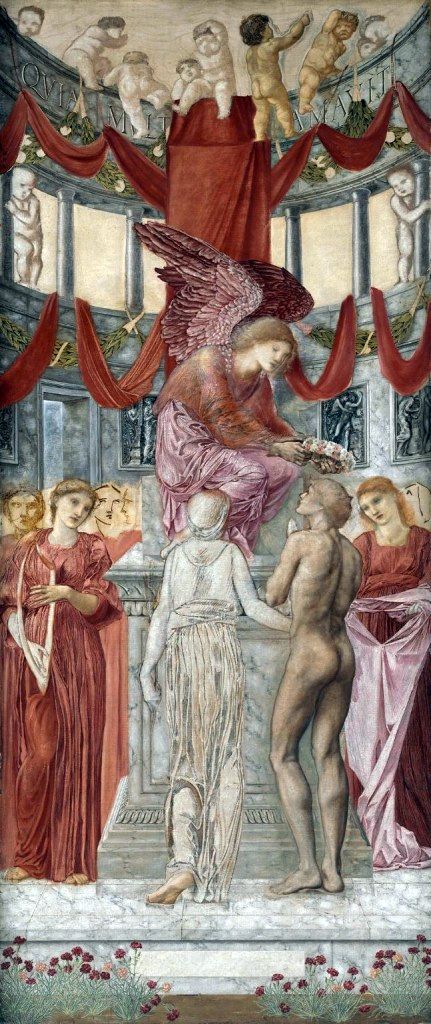 Temple de l’amour – Edward Burne-Jones
Temple de l’amour – Edward Burne-Jones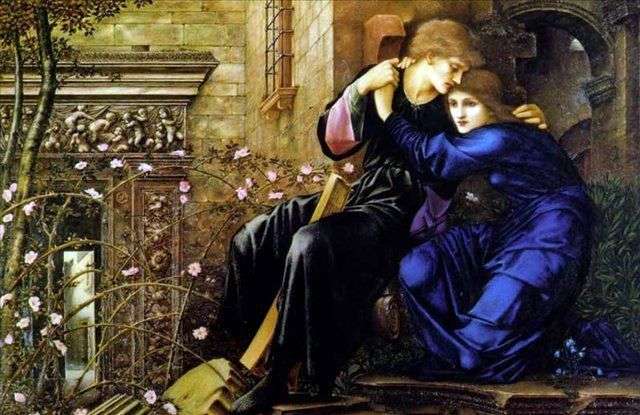 Love among the ruins by Edward Burne-Jones
Love among the ruins by Edward Burne-Jones